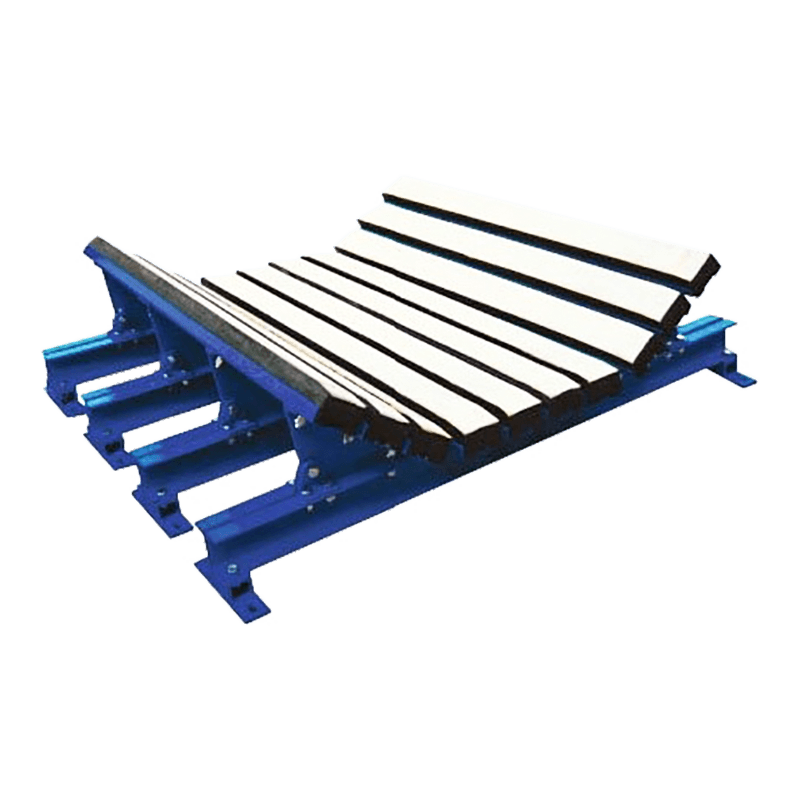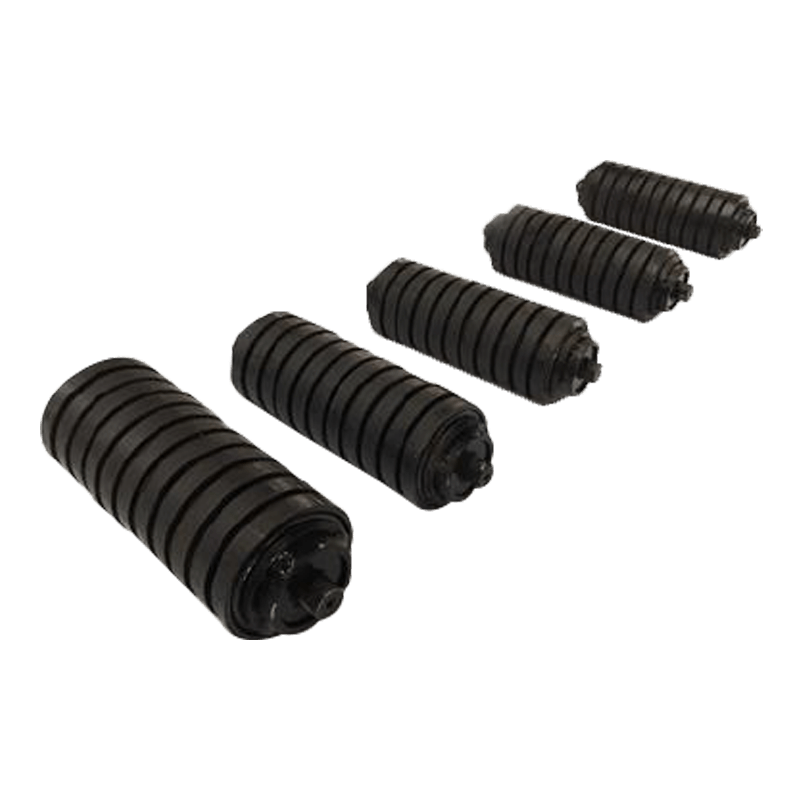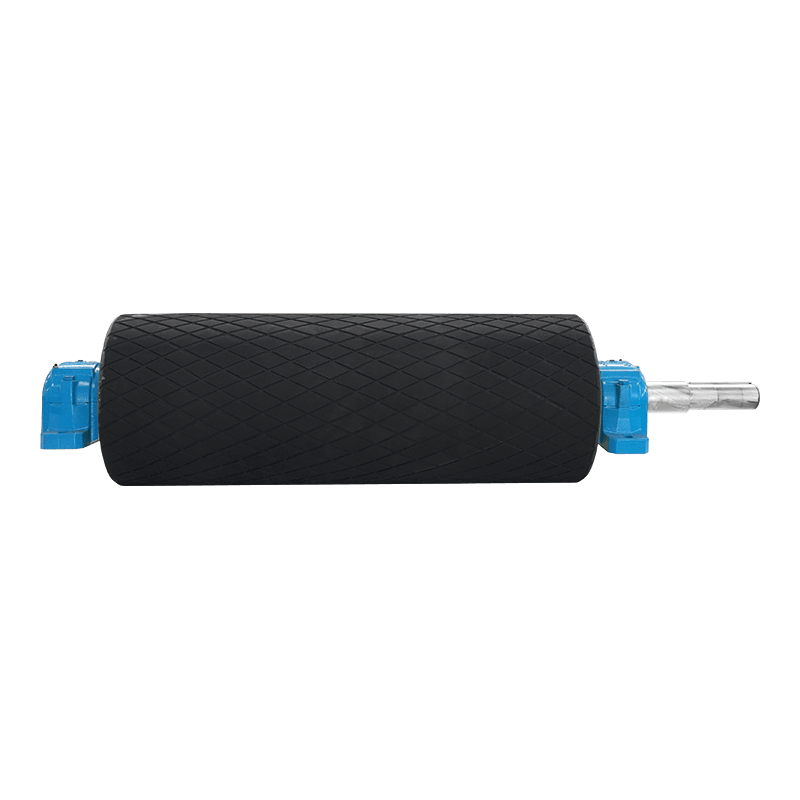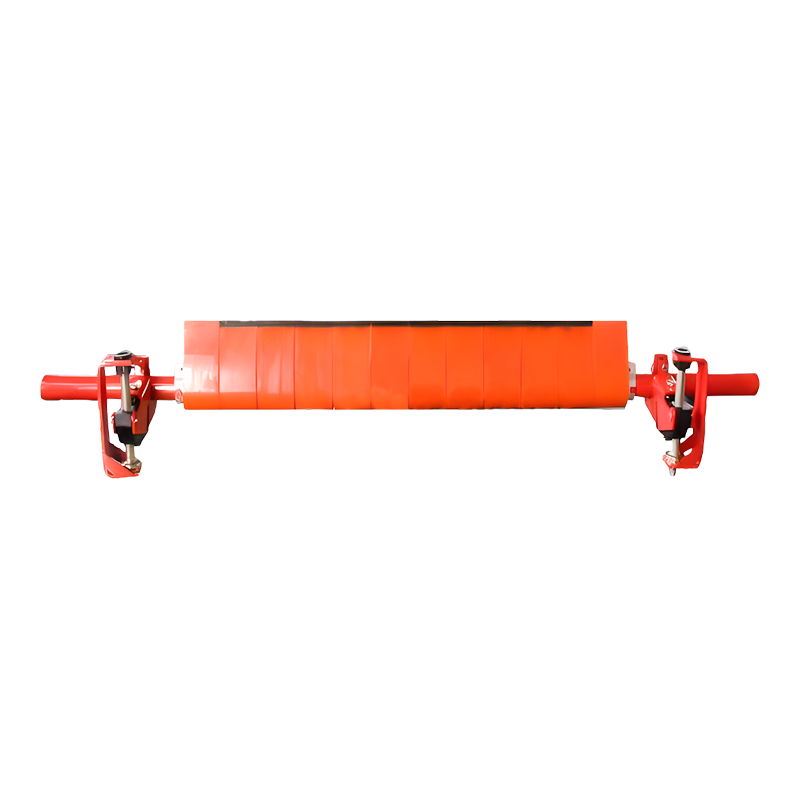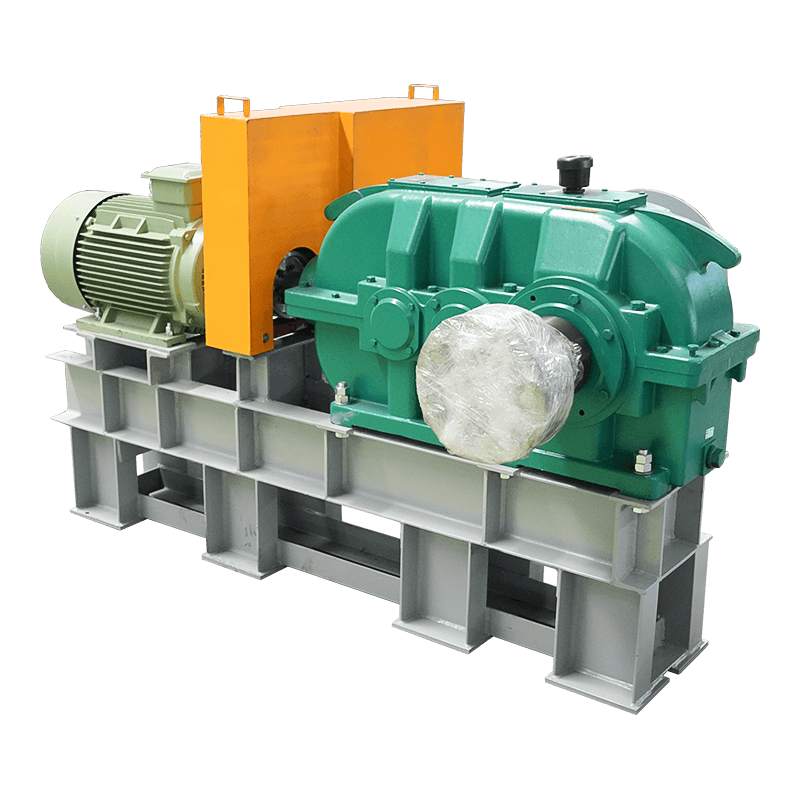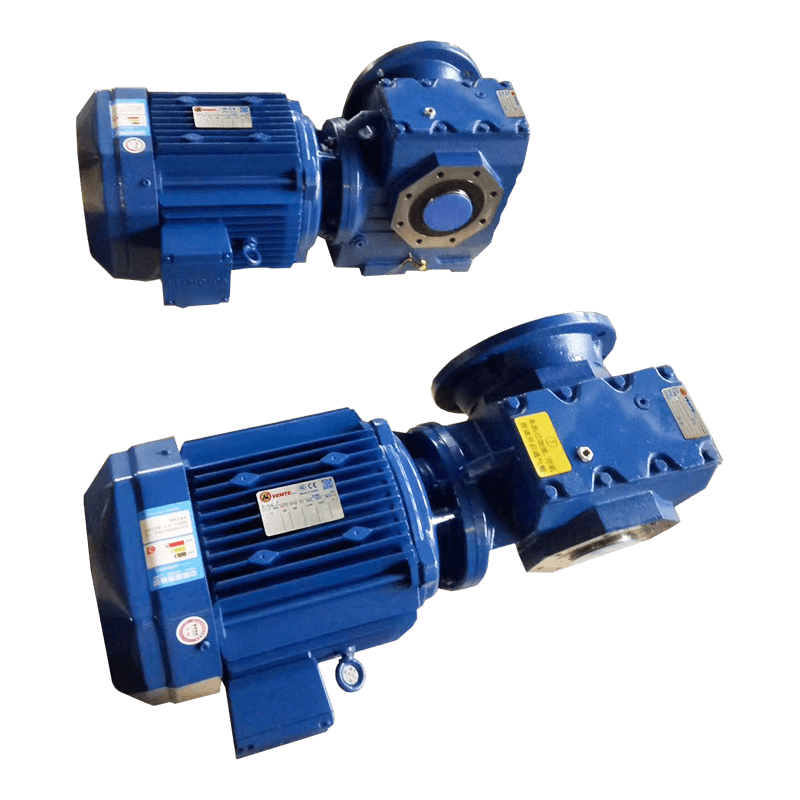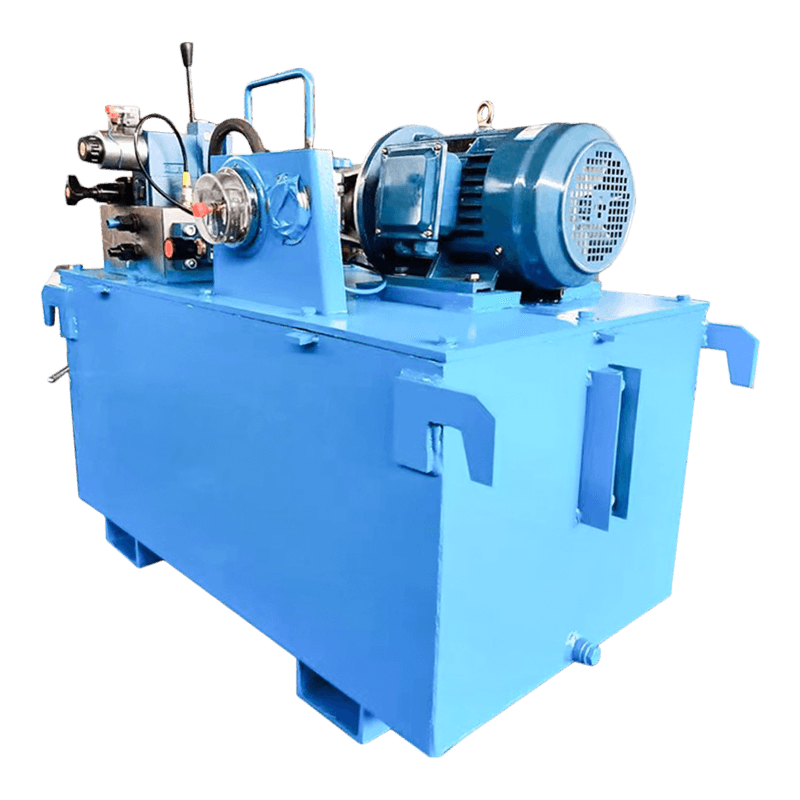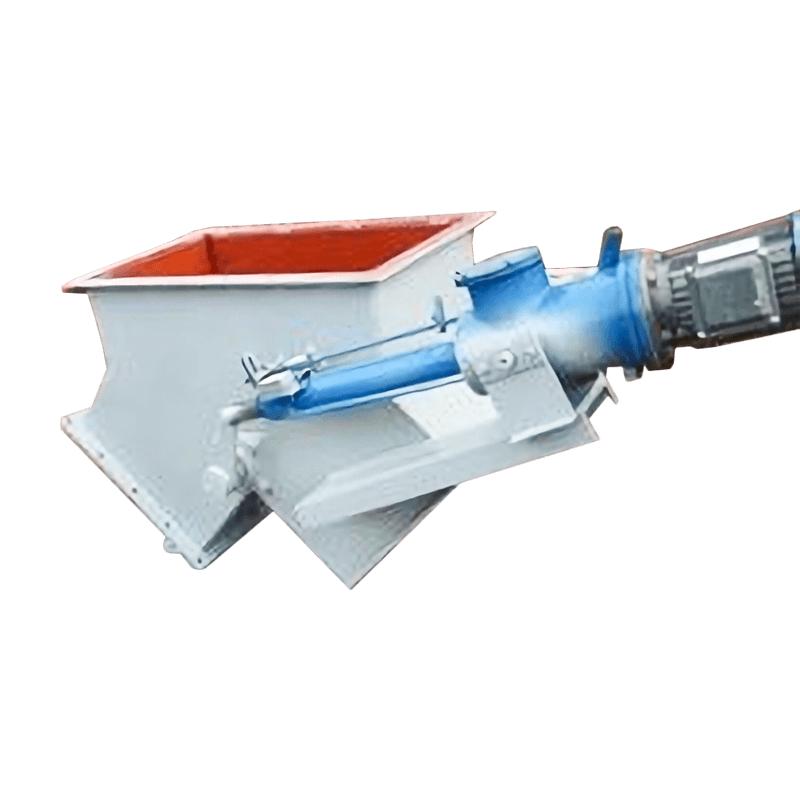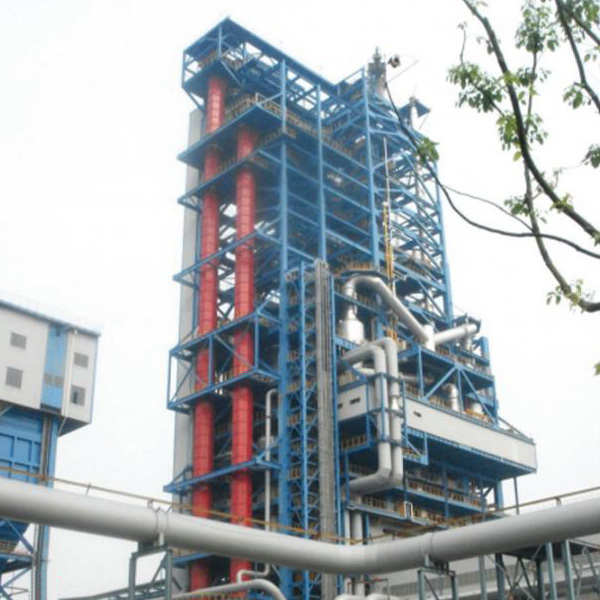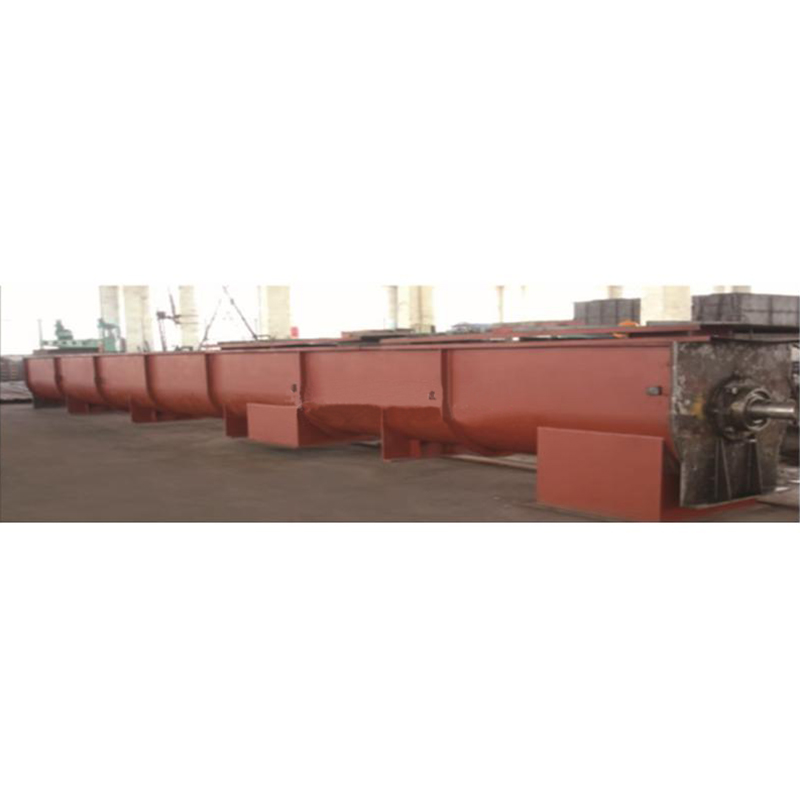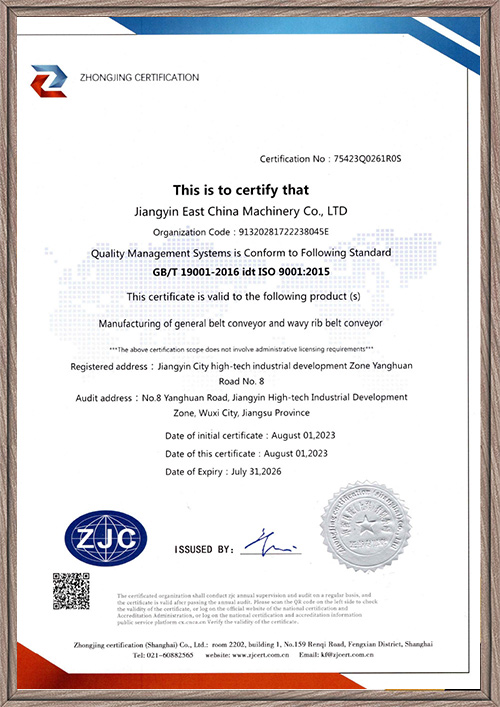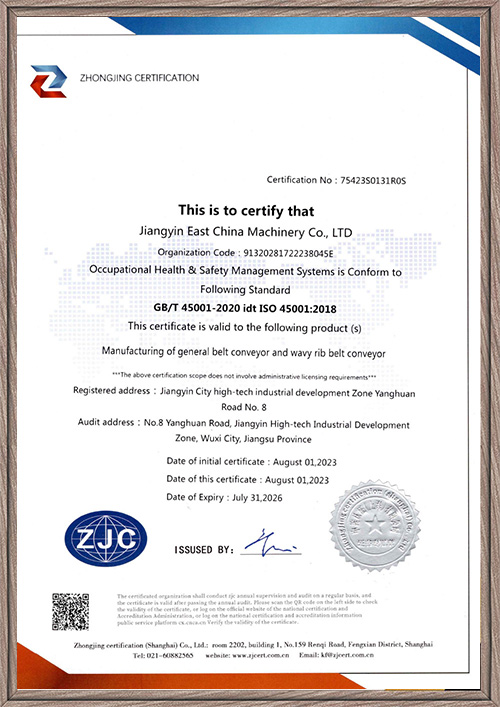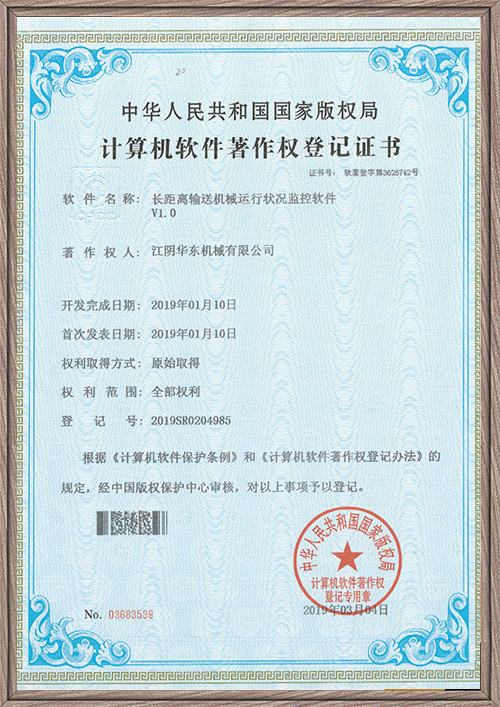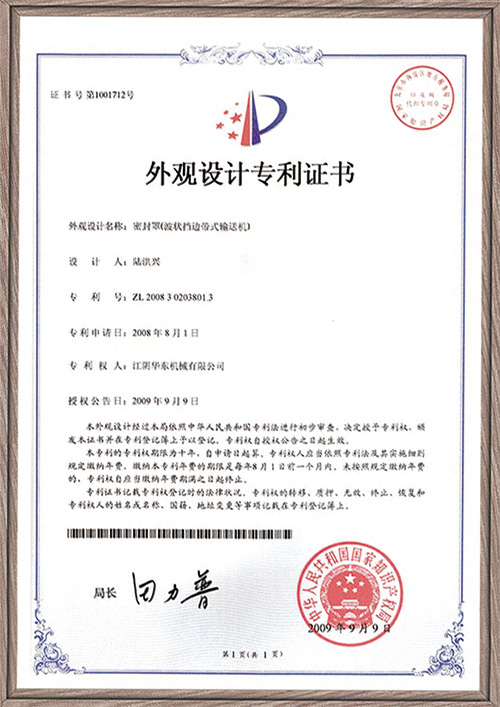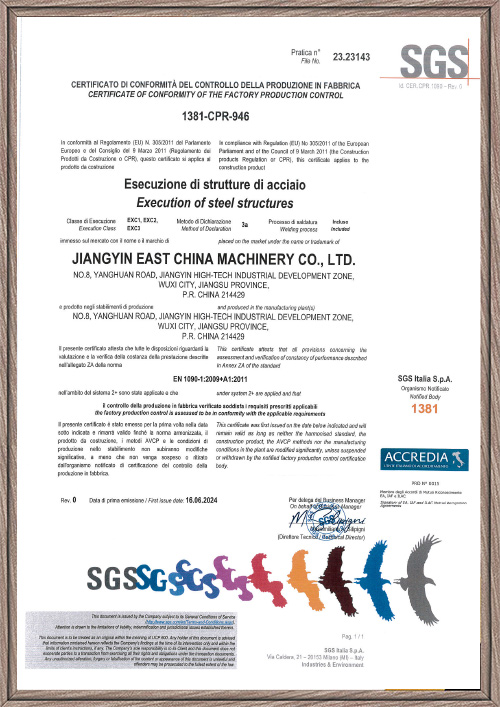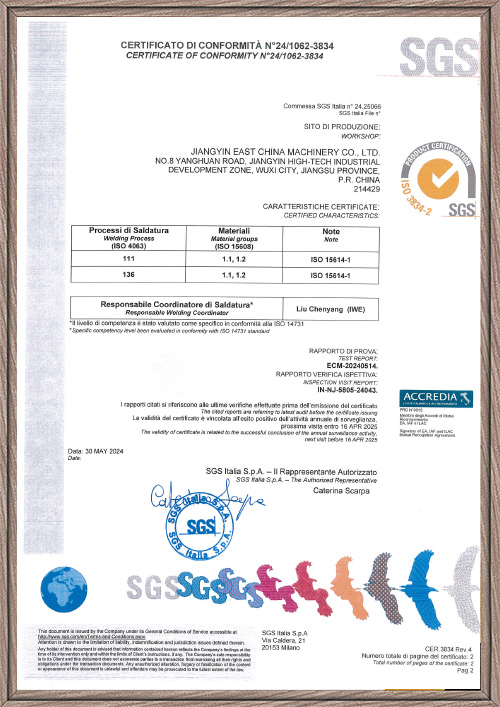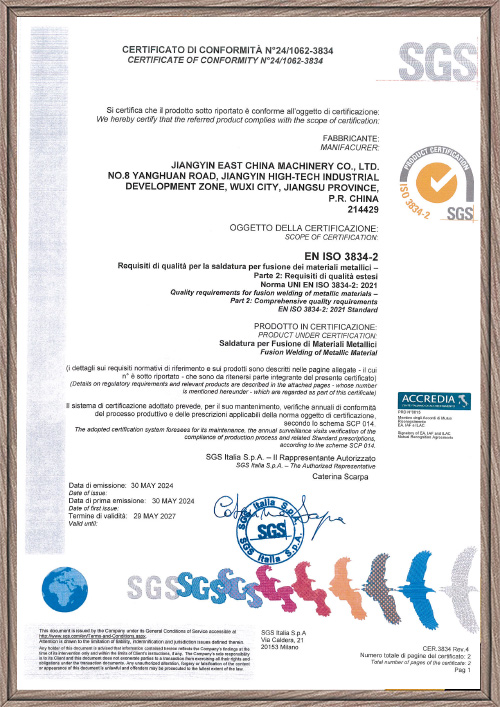Impact Bed For Belt Conveyor
The buffer bed is mainly used to replace the buffer rollers. The buffer bed is composed of buffer strips. The buffer strips mainly use an good high-elastic special rubber layer to fully and effectively absorb the impact force when the material falls, greatly reducing the impact of the material on the conveyor when it falls. The impact of the belt really improves the stress condition of the blanking point. The special UHMW polymer polyethylene surface is used to minimize the friction coefficient between the conveyor belt and the buffer strip and has good wear resistance. The use of the buffer bed ensures that the surface of the conveyor belt is in contact with each other and the force is uniform, effectively preventing the longitudinal tearing of the belt caused by the breakage and falling off of the roller, and at the same time greatly reducing the risk of the belt being penetrated by sharp objects or sharp materials. Probability of tearing

Specifications
Performance features:
1. The surface contact between the buffer strip and the conveyor belt effectively prevents damage to the conveyor belt.
2. The conveyor belt is evenly stressed at the blanking port, which greatly reduces daily repair and maintenance costs.
3. Effectively eliminate material splashing and leakage caused by uneven stress on the conveyor belt
4. The smooth surface of ultra-high molecular weight polyethylene minimizes friction when the conveyor belt is running.
5. The arc-shaped design on the surface of the polyethylene layer ensures the smooth operation of the conveyor belt.
6. The ultra-high elasticity special rubber layer can absorb the impact of materials to the max. extent
7. The various parts of the buffer strip are connected using a hot vulcanization process, making them compact and firm.
8. The design of the underlying steel structure makes disassembly and assembly easy and fast
The various advantages of the buffer bed determine that it will definitely be the future development trend of traditional roller supports.
Application: Steel, metallurgy, coal, cement, power generation, ports and other heavy-duty industries.
KEEP IN TOUCH
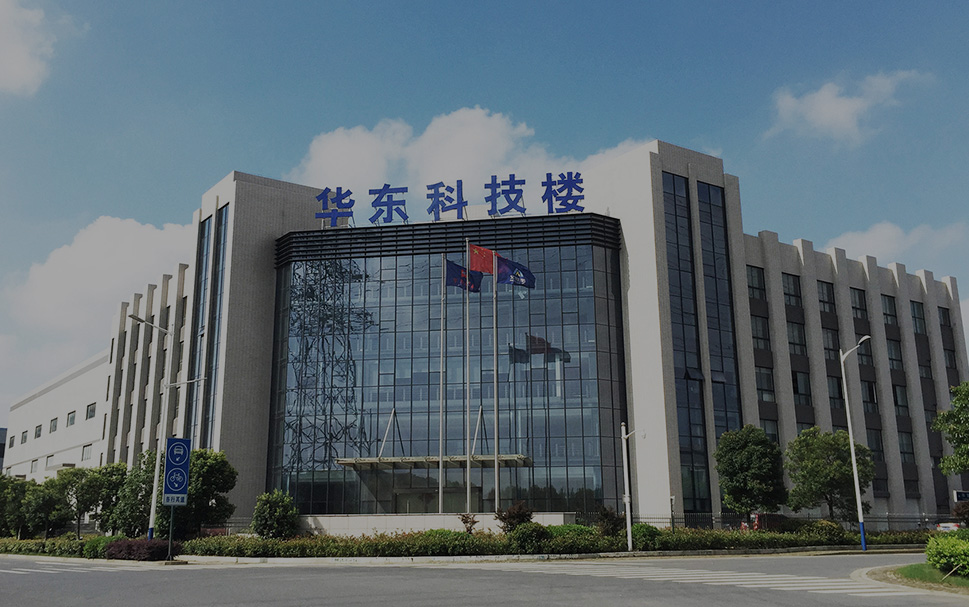
Our company focuses on the product R&D and investment, and with the great support from the government, has founded its research center of high lift conveyor engineering technology, and successively developed an extensive technical exchange and cooperation with many universities and famous organizations such as, Taiyuan University of Science and Technology, Northeastern University, Beijing Iron & Steel Design & Research Institute, Bejing Hoisting & Conveying Machinery Research Institute, German Contitch Company, Britain SBS Company, German KoCH Company etc.; and has successively obtained 22 national patents in the product R&D.
-

A ceramic lagging conveyor pulley is a drive or redirecting pulley with a special rubber coating on the surface of a metal roller, embedded with ultra-hard ceramic discs. Ceramic rollers offer high we...
READ MORE -

Belt conveyor troughing idlers are key components supporting the conveyor belt. Their condition directly affects conveying efficiency, energy consumption, and equipment life. Troughing idlers are wide...
READ MORE -

Idler rollers are key components of belt conveyors, directly impacting the efficiency and service life of the conveyor belt. The following are common belt conveyor roller failure types, cause analysis...
READ MORE
Impact Bed For Belt Conveyor Specific Ways to Prevent Material Splashing
Arc Design: The arc design on the surface of the buffer strip can effectively change the angle at which the material falls. When the material contacts the buffer strip at a gentler angle, the impact force is dispersed, which can reduce the probability of material rebound and splashing.
High Elastic Rubber Layer: The buffer strip is made of high elastic special rubber with good energy absorption capacity. When the falling material hits, this rubber layer can deform and absorb the impact energy, thereby reducing the direct impact of the material on the conveyor belt and reducing the risk of splashing.
Uniform Contact: The design of the impact bed ensures good contact between the buffer strip and the conveyor belt. The uniform pressure distribution reduces the material splashing due to excessive local pressure. At the same time, this design can effectively prevent longitudinal tearing caused by damage or falling of the buffer strip.
Smooth Surface: The buffer strip is made of ultra-high molecular weight polyethylene material with a smooth surface and low friction coefficient. This reduces the friction of the material on the buffer strip and reduces the chance of the material adhering to the surface of the buffer strip, thereby reducing the risk of material splashing.
Self-cleaning function: The buffer strips are designed with certain gaps and channels, which allow dust and material residues to be discharged naturally during operation, reducing the accumulation of materials on the buffer bed, helping to keep it clean and further reduce the risk of splashing.
Strong connection structure: The buffer strips are connected by a hot vulcanization process, with a compact and strong structure to ensure stability in a high-intensity working environment and avoid material splashing due to loose structure.
Overall design: The overall design takes into account the characteristics of the material, such as humidity, viscosity and weight, to ensure that the buffer bed can effectively control the behavior of the material and avoid splashing under different working conditions.

 English
English  русский
русский Español
Español

